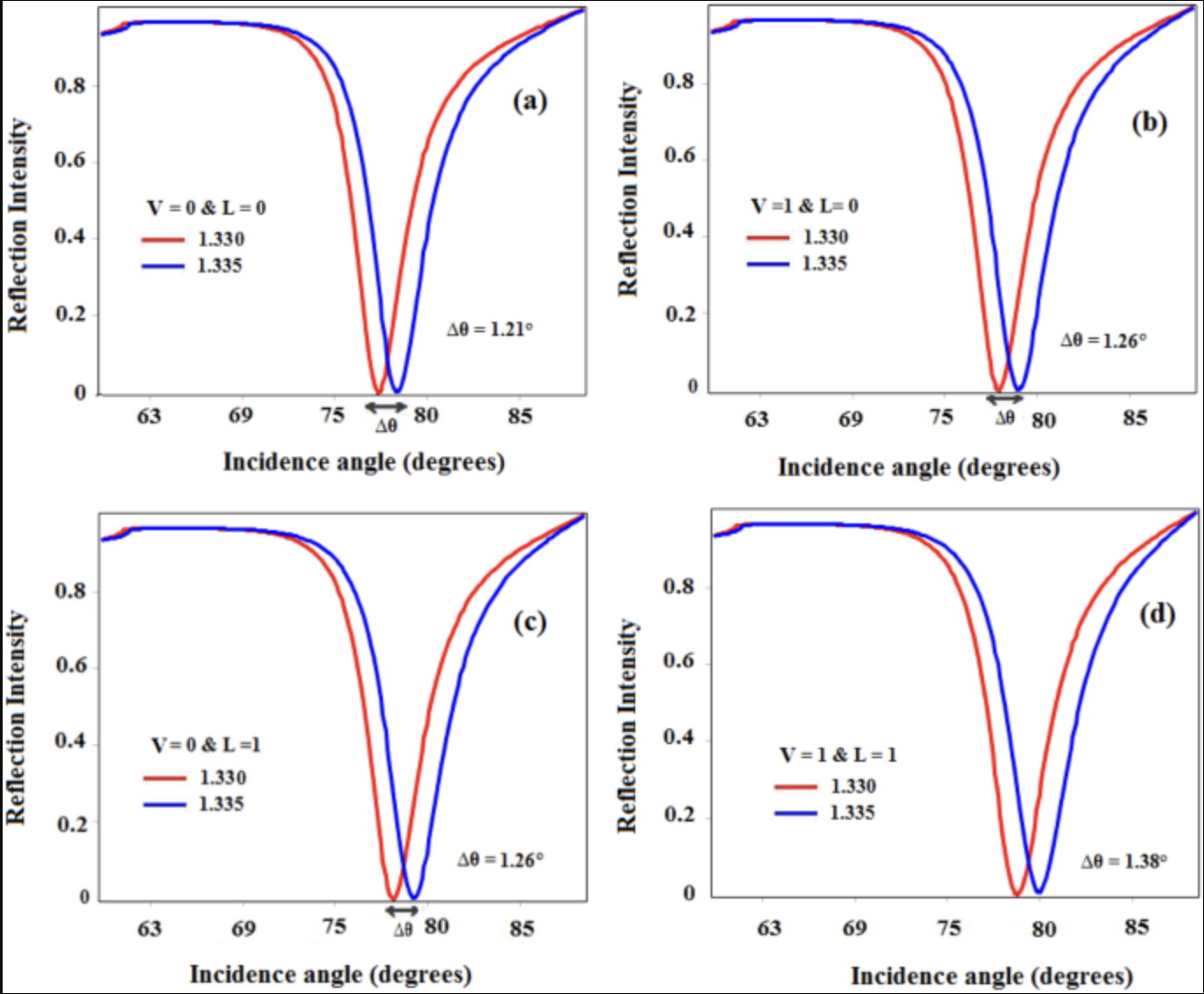Physical science
Black Phosphorous and Cytop Nanofilm-Based Long-Range SPR Sensor with Enhanced Quality Factor
This numerical work proposes two novel designs of long-range surface plasmon resonance sensors (LRSPR) using two different coupling prisms. The performance analysis of the proposed sensor has been investigated using the performance parameters like quality factor (), detection accuracy (DA), sensitivity (), and full-width half maximum (FWHM). The transfer matrix method (TMM) has been employed to compute reflectance. The role of the basic recognition element (BRE) has been played by the popular two-dimensional (2D) material, black phosphorus (BP), due to its many optoelectrical features. The maximum obtained values for , DA, and are 3333.25 , 250 , and 13.33333 degree/RIU for 2S2G coupled sensor design and 3055.5, 83.33 , and 36.66667 degree/RIU for BK7 coupled sensor design. The operating wavelength of 633 nm, followed by the principle of attenuated total reflection (ATR), has been employed to carry out the theoretical investigation.
1. Introduction
Over the past decade, many research works have been carried out on various sensing mechanisms. Surface plasmon resonance (SPR) is the mainly focused principle for many sensing applications in the optical field [1]. The surface plasmons (SPs) are the cloud of electrons propagating along the metal surface as the incident wave (TM polarized) strikes the metal surface’s free electrons [2, 3]. So, the phenomenon of SPR generally occurs when the incident wave vector matches with the surface plasmon wave vector [4]. SPR sensor design can be classified mainly as prism-based [5], grating-based [6], optical waveguide coupling [7], and fiber-based [8]. From these, the prism and fiber coupling are the most popular SPR structures. In optical materials, the dielectric function of the refractive index is critical for controlling the flow of electromagnetic wave propagation. A significant alteration in the SPR signal can be noted for a slight alteration in the refractive index in the environment. Recent developments in various biosensors make them extensively used in the medical [9], bioengineering [10], environmental [11], and food industries [12]. Higher requirements in terms of sensitivity, specificity, and bioassay methods have been raised due to the evolution of biotechnology. The above requirements are not easy to be fulfilled by the conventional SPR (CSPR). So, some new SPR modes like long-range surface plasmon resonance (LRSPR), waveguide coupled surface plasmon resonance (WCSPR), and coupled plasmon waveguide resonance (CPWR) have been studied [13]. In the year 1981, Sarid had given the concept of LRSPR [14]. The mechanism of LRSPR is a special electromagnetic (EM) mode in which a layer of dielectric buffer was inserted between metal and the substrate. The long-range surface plasmon penetrates deep inside the analyte because of weaker confinement between the metal layers. As a result, it has a longer propagation distance and greater EM field generation than the CSPR. The EM fields of the surface plasmon polaritons (SPPs) that belong to the two interfaces of the metal layer start to overlap when it is sandwiched between two dielectric layers with the same refractive index (RI), creating a symmetric EM field mode and an antisymmetric EM field mode [13]. The penetration depth in the analyte and propagation length along the interface between the metal film and analyte in the case of symmetric mode is quite higher, with a lower value of attenuation than in the other case. Due to this, the field distribution is symmetric EM field mode for long-range SPPs, while the antisymmetric EM field mode is called short-range surface plasmon resonance. Other advantages of long-range surface plasmon include the greater figure of merit (FOM) and detection accuracy (DA) with a low full-width half maximum (FWHM) [14].

